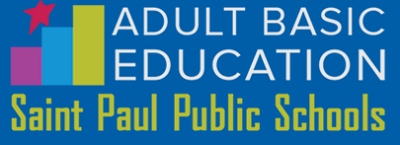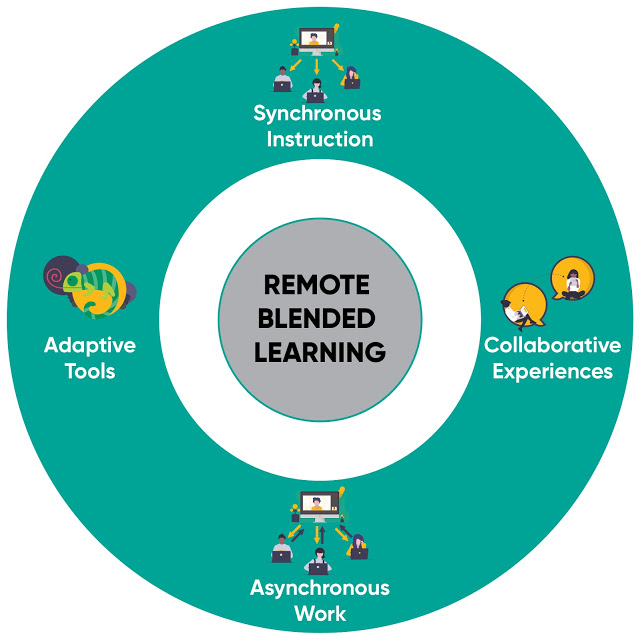- MN ABE Connect
- Archive
- An Introduction to Blended Learning with CommonLit: Part 1
 December 14, 2020
December 14, 2020
An Introduction to Blended Learning with CommonLit: Part 1
Tammy Twiggs, InstructorMy journey this year with Blended Learning
If you had asked me for a definition of Blended Learning and how that might look in an ABE classroom just nine months ago, I might have produced a somewhat vague response, based on theory or research from a journal, but definitely not in practice.
How our lives have changed since COVID! The impact on the way I deliver instruction has changed significantly as well. I used to teach “Hybrid” classes, with a focus on 90% face-to-face instruction and a few opportunities for my learners to log onto an approved learning platform outside of class to extend their learning. I encouraged my learners to do their “hybrid” work without a real working knowledge of how to support them and keep them engaged in their online work.
Well, necessity truly is the mother of invention, so over the past year I have had to retool everything I do as an ABE Instructor. No longer am I able to rely on my traditional method of instruction; I needed a total paradigm shift in my teaching repertoire. My discovery of Blended Learning has helped me to adapt my teaching effectively in this new, virtual teaching environment.
What is Blended Learning?
Blended Learning is not new, and there are several examples of it in peer-reviewed research. The Technology for Learners website defines Blended Learning as a “model [that] combines the best of online educational platforms and online interaction (via Zoom, Google Meet, or Hangouts, for example) with traditional, face-to-face teaching methods” (cited from https://technologyforlearners.com/what-is-blended-learning/). Blended Learning has traditionally included some form of face-to-face learning combined with an online learning component.
In many ways, what I was doing pre-COVID was a Flipped Classroom model of Blended Learning. However, my face-to-face instruction has been replaced by learning in a synchronous environment using videoconferencing tools. As Part 1 of a three-part series, this article is an introduction to Blended Learning. In Part 2, I will delve more deeply into how I build lessons and unit plans using a Blended Learning model. In Part 3, I will explore the features in CommonLit and explain how to build a course.
Remote Blended Learning
My virtual classroom consists of both L1 learners, whose primary language is English, and English Language Learners, all of whom have the goal of earning a GED. My learners range from ABE Level 2 to ABE Level 6, so I utilize Instructional Grouping for my Google Meet Synchronous classes to deliver instruction that aligns to the learners’ needs and to their CCRS Level.
The key to Blended Learning is intentionality, which requires me to build my lesson plans starting with an ABE-approved platform that incorporates the three key ELA shifts of complexity, evidence, and knowledge. In the Remote Blended Learning Model, there is a truly learner-centered focus, based on a Spiral method, whereby learners continue to circle back via synchronous instruction, collaborative experiences, asynchronous work, and virtual learning tools.
Using a model of Blended Learning Instructional Design developed by former principal Eric Sheninger, I plan my lessons for the week with CommonLit as the primary platform.
Remote Blended Learning Model – Eric Sheninger
(Sheninger, E., 2020. Retrieved December 14, 2020, from http://esheninger.blogspot.com/2020/04/remote-learning-teaching-tips.html)
- Learners engage in a collaborative experience via Google classroom before class (respond to a Writing Prompt, view an EdPuzzle video with quiz, or a watch YouTube video to build background knowledge)
- Synchronous instruction – Learners attend a Google Meet where we practice a reading skill, such as reading for the Implied Main Idea, utilizing the content in the pre-class work (Thematic Topics: The Pros and Cons of GMOs, Causes of the Greenhouse Effect, The Road to American Independence, etc.)
- During Google Meet, learners use adaptive tools for interactive reading, writing, speaking and listening, such as Jamboard, Breakout rooms, Google Drive, PearDeck, etc.
- After class, learners continue practicing independently with the Reading skill and the weekly thematic topic in CommonLit and a custom Edmentum course via asynchronous work.
What I have learned about remote teaching and learning
At the beginning of COVID, if you asked me whether I would rather teach face-to-face or virtually, I would have responded unequivocally, “I want to be in the classroom with my learners.” However, COVID has taught me several things.
First, some learners who were not “steady attenders” are flourishing in online classes with a Blended Learning model. Since they can attend only once or twice a week, and then do some of their work asynchronously, they are enjoying a higher measure of success versus dropping off the radar or stopping out.
Second, with a strong platform and a Blended Learning model of instruction, Hybrid Synchronous and Asynchronous classes produce strong results in terms of learner hours, attendance, and completion of an academic goal, such as the GED.
Finally, pushing my learners to “try new things” because “persistence is the key to success” has been my mantra. Now, I have to apply this mantra to my own teaching and ask of myself what I have always asked of my learners: to try and persist when it gets hard. In Brené Brown’s interview with David Eagleman about “Brain Plasticity,” he said, “I would say, the single most important lesson that has emerged about all this brain plasticity stuff is that, if you challenge yourself, if you are constantly facing new tasks and challenges that you’re no good at, you are building new roadways and bridges….” (cited from https://brenebrown.com/transcript/brene-with-david-eagleman-on-the-inside-story-of-the-ever-changing-brain/). For me as an educator, that has probably been the greatest lesson COVID has taught me.
Check out Part 2 of this article about Blended Learning with CommonLit, where I will share my best successes for the “how” of building robust Blended Learning lessons and units using Common Lit.
References
Brown, B. (Host). (2020, December 2). Brené with David Eagleman on The Inside Story of the Ever-Changing Brain [Audio podcast episode]. In Unlocking Us with Brené Brown. Cadence13. https://brenebrown.com/podcast/brene-with-david-eagleman-on-the-inside-story-of-the-ever-changing-brain/. Retrieved December 14, 2020, from https://brenebrown.com/transcript/brene-with-david-eagleman-on-the-inside-story-of-the-ever-changing-brain/
Fastiggi, W. (n.d.). What is Blended Learning? Retrieved December 14, 2020, from https://technologyforlearners.com/what-is-blended-learning/
Sheninger, E. (2020, April 26). Remote Learning Teaching Tips. Retrieved December 14, 2020, from http://esheninger.blogspot.com/2020/04/remote-learning-teaching-tips.html

Newsletter Signup
Get MN ABE Connect—the official source for ABE events, activities, and resources!
Sign UpArticle Categories
- ABE Foundations/Staff Onboarding
- ACES/Transitions
- Adult Career Pathways
- Assessment
- CCR Standards
- Citizenship
- COVID-19
- Cultural Competency
- Digital Literacy/Northstar
- Disabilities
- Distance Learning/Education
- ELA
- Equity/Inclusion
- ESL
- HSE/Adult Diploma
- Listening
- Math/Numeracy
- Mental Health
- Minnesota ABE
- One-Room Schoolhouse/Multilevel
- Professional Development
- Program Management
- Reading
- Remote Instruction
- Science
- Social Studies
- Speaking/Conversation
- Support Services
- Teaching Strategies
- Technology
- Uncategorized
- Volunteers/Tutors
- Writing
